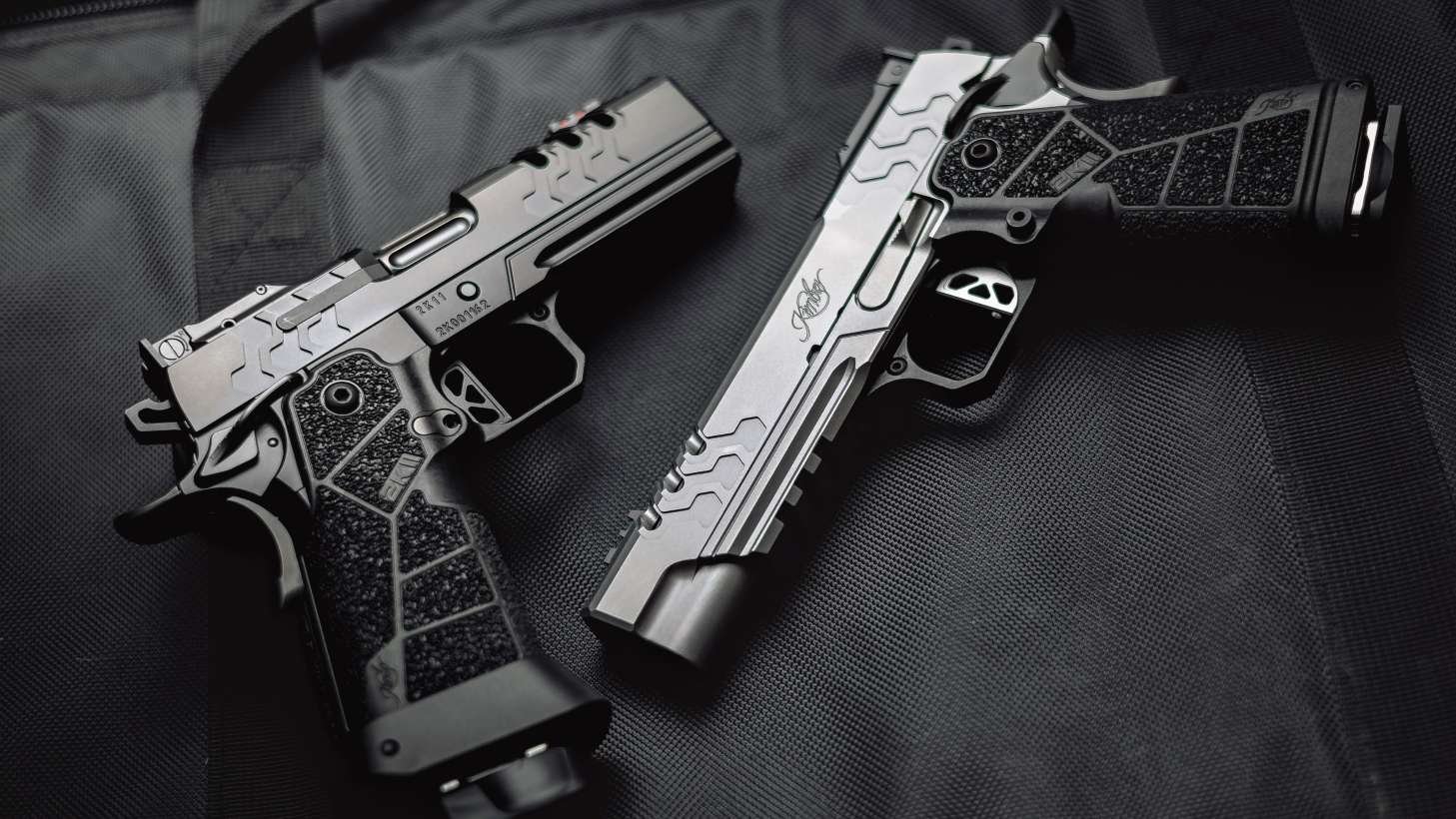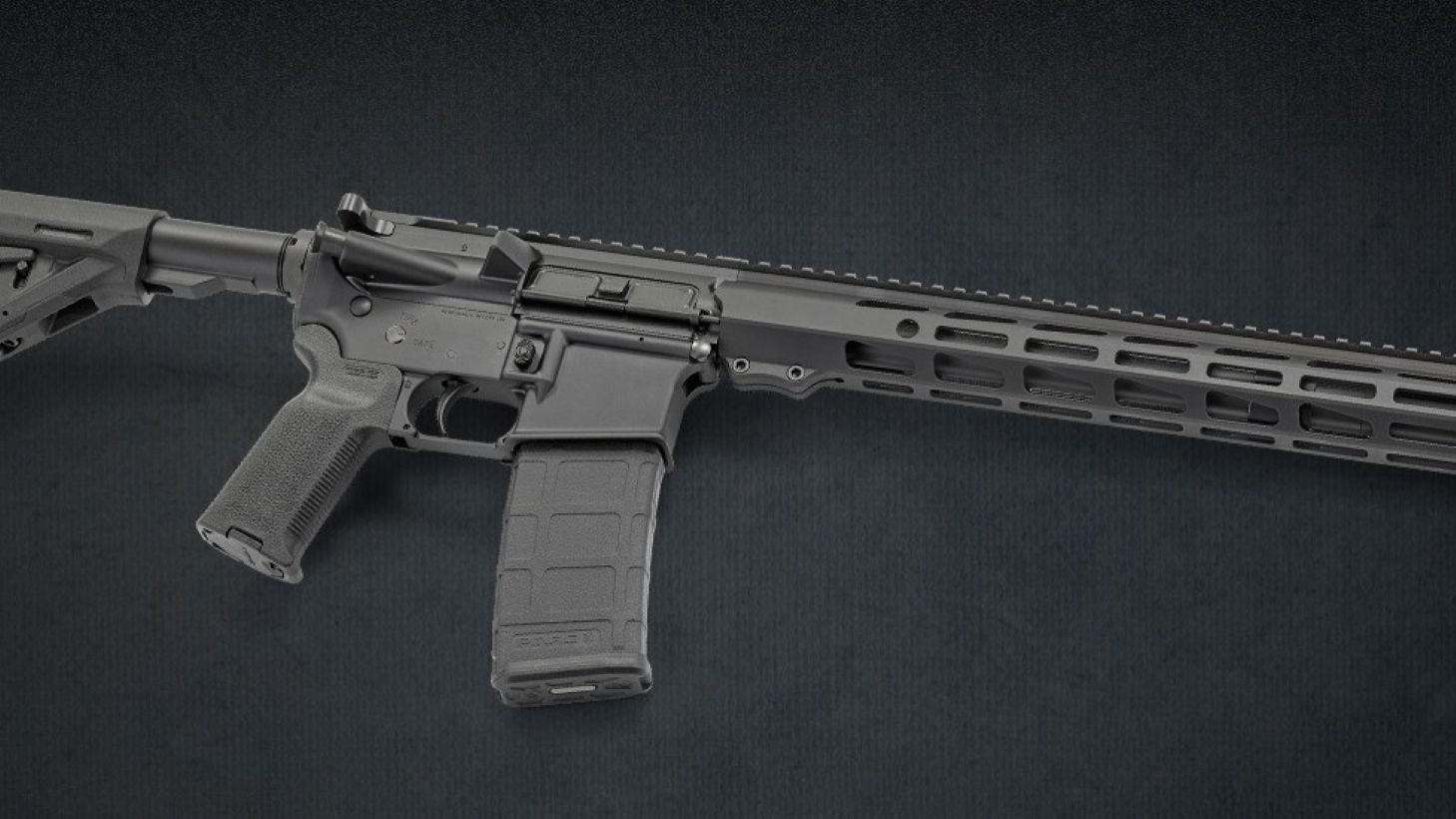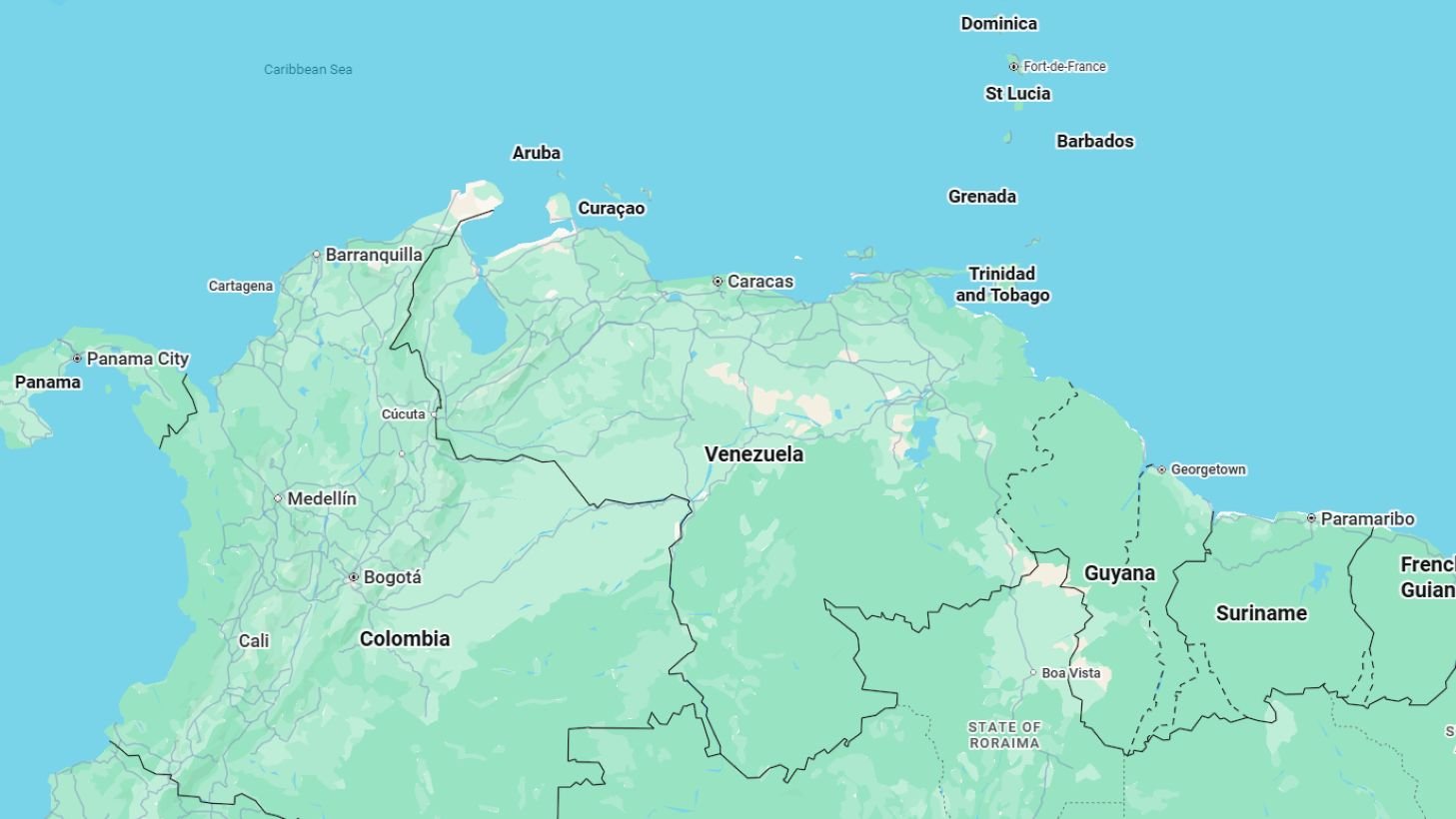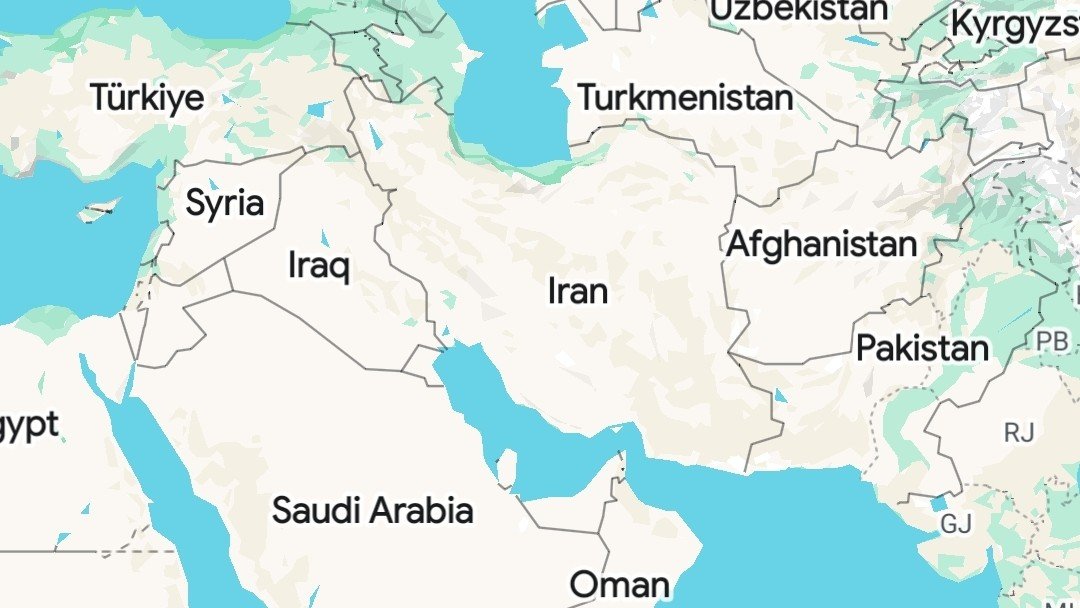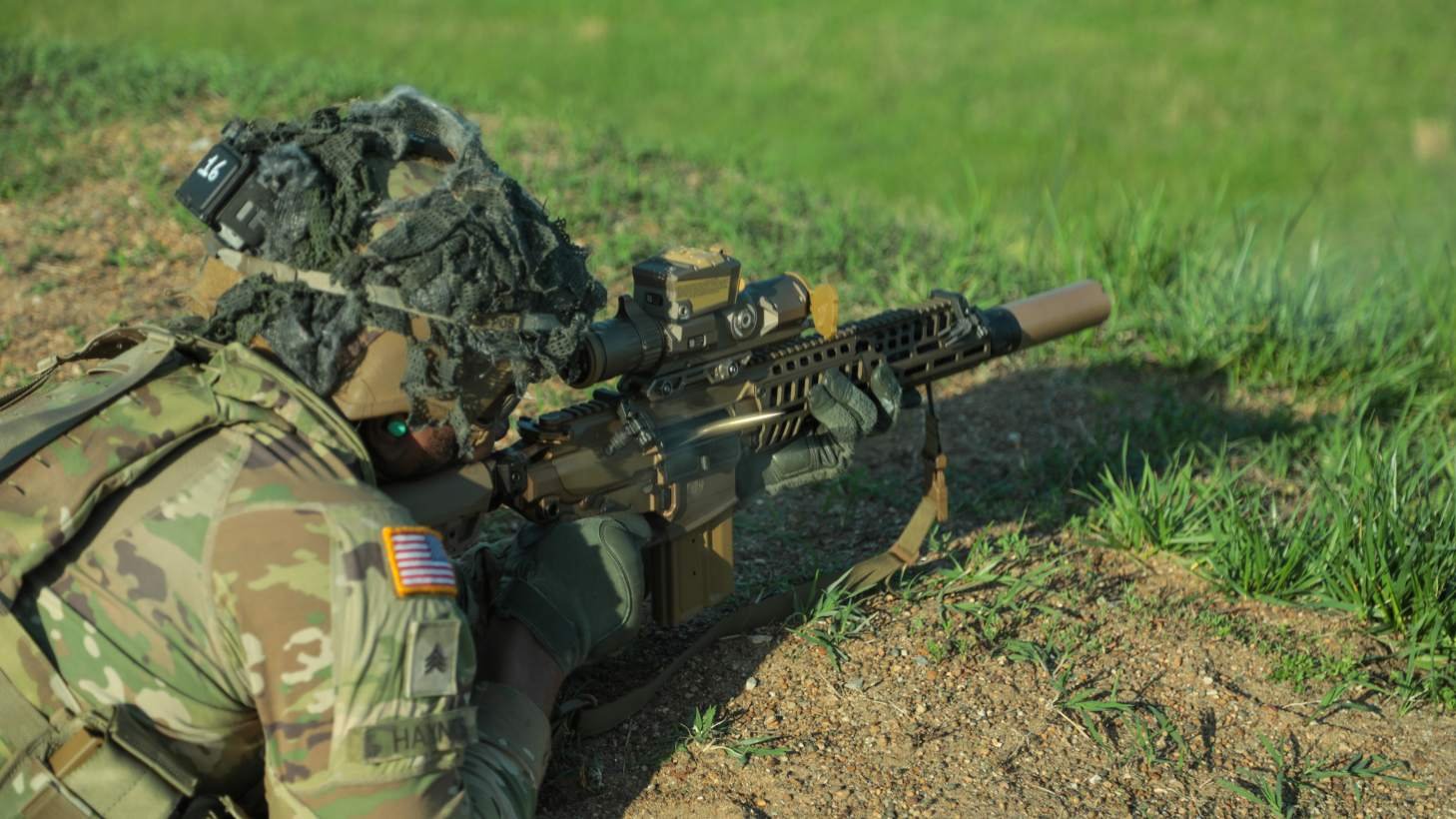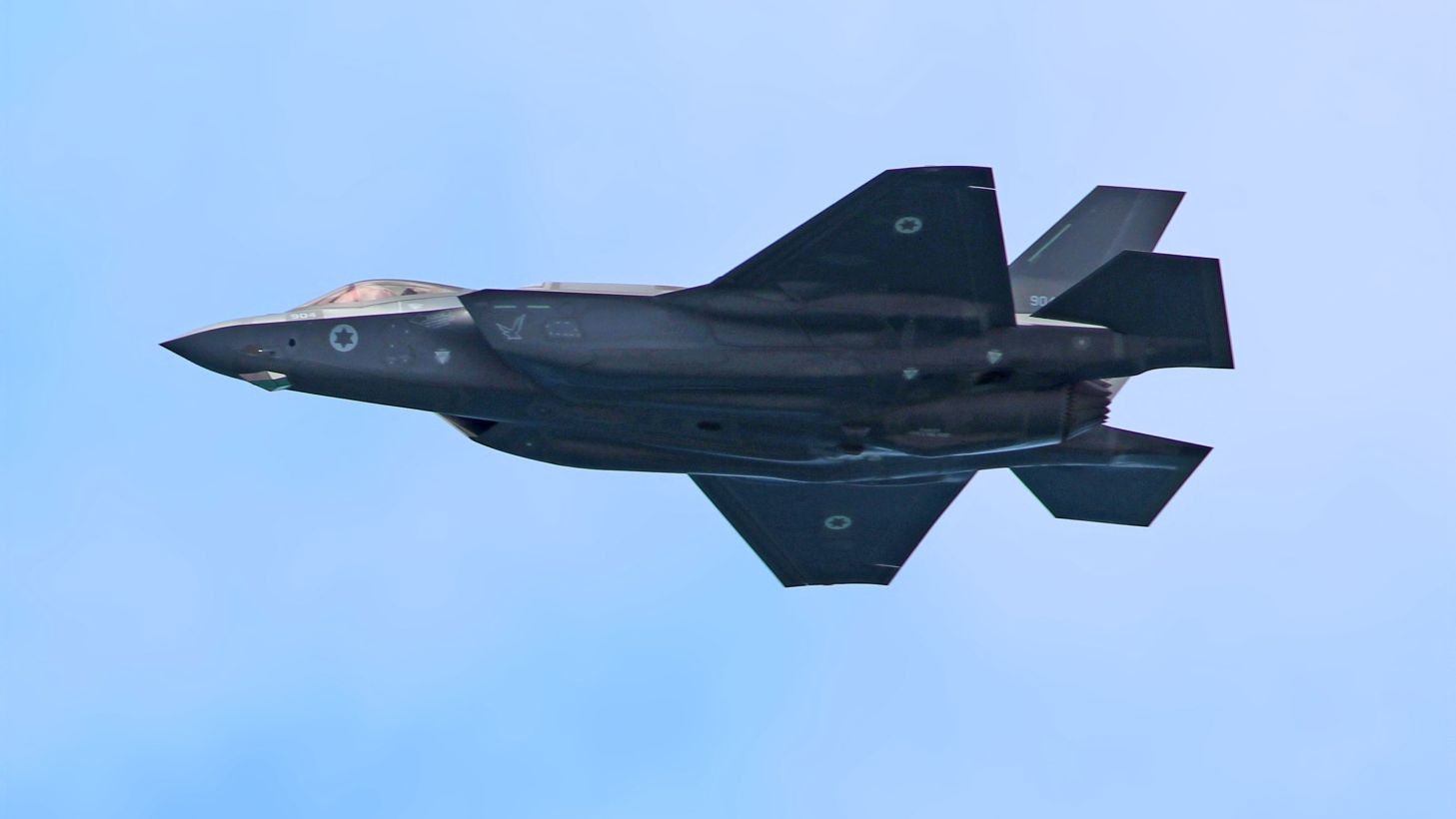-
Posts
829 -
Joined
-
Last visited
About Uncrowned Guard
- Birthday 06/29/1990
Uncrowned Guard's Achievements
-
Kimber Expands 2K11 Line With Compensated Models Kimber Manufacturing has announced the addition of the 2K11 Comp series, expanding its high-capacity, 1911-style platform with factory-compensated variants. The new models are scheduled to debut in January 2026, roughly a year after the original 2K11 was introduced in late 2024. The expansion addresses sustained demand for recoil-mitigating options within Kimber’s double-stack 1911 lineup. Four Configurations and Size Options The 2K11 Comp series consists of four models offered in either black or stainless finishes. Buyers can choose between a full-size version with a 5-inch barrel or a Pro-size model with a 4.25-inch barrel. Each variant incorporates an integrated compensator positioned forward of the front sight. The compensator is designed to reduce muzzle rise and improve control during rapid or sustained fire without altering the platform’s core operating system. Updated Construction and Grip Module A notable update across the Comp series is the introduction of Kimber’s carbon fiber and glass-filled matrix grip module. The grip is paired with a CNC-machined stainless steel subframe coated in DLC, incorporating a proprietary shoulder intended to prevent magazine over-insertion and potential ejector damage. The design aims to balance weight reduction with structural rigidity while maintaining compatibility with the 2K11’s double-stack magazines. Features and Mechanical Details All 2K11 Comp pistols are chambered in 9mm and retain several features introduced with the original platform, including a patent-pending toolless guide rod system, external extractor, improved internal magazine geometry, and optics-ready slide. Select models are equipped with a Stan Chen Customs magwell and TAG Precision steel optic adapter plates. Barrels are crowned and fluted, using 5R rifling, and are fit to the slide to tight tolerances. Manufacturing and Availability Kimber states that each 2K11 Comp is assembled from start to finish by a single technician at its Troy, Alabama facility, where the stainless-steel slide, frame, and barrel are machined. Finishes vary by model, with some receiving DLC coatings and others offered in stainless. Retail availability is expected as early as January 2026, with immediate shipment planned following launch.
-
- product launch
- manufacturers
-
(and 2 more)
Tagged with:
-
Kimber Expands 2K11 Line With Compensated Models Kimber Manufacturing has announced the addition of the 2K11 Comp series, expanding its high-capacity, 1911-style platform with factory-compensated variants. The new models are scheduled to debut in January 2026, roughly a year after the original 2K11 was introduced in late 2024. The expansion addresses sustained demand for recoil-mitigating options within Kimber’s double-stack 1911 lineup. Four Configurations and Size Options The 2K11 Comp series consists of four models offered in either black or stainless finishes. Buyers can choose between a full-size version with a 5-inch barrel or a Pro-size model with a 4.25-inch barrel. Each variant incorporates an integrated compensator positioned forward of the front sight. The compensator is designed to reduce muzzle rise and improve control during rapid or sustained fire without altering the platform’s core operating system. Updated Construction and Grip Module A notable update across the Comp series is the introduction of Kimber’s carbon fiber and glass-filled matrix grip module. The grip is paired with a CNC-machined stainless steel subframe coated in DLC, incorporating a proprietary shoulder intended to prevent magazine over-insertion and potential ejector damage. The design aims to balance weight reduction with structural rigidity while maintaining compatibility with the 2K11’s double-stack magazines. Features and Mechanical Details All 2K11 Comp pistols are chambered in 9mm and retain several features introduced with the original platform, including a patent-pending toolless guide rod system, external extractor, improved internal magazine geometry, and optics-ready slide. Select models are equipped with a Stan Chen Customs magwell and TAG Precision steel optic adapter plates. Barrels are crowned and fluted, using 5R rifling, and are fit to the slide to tight tolerances. Manufacturing and Availability Kimber states that each 2K11 Comp is assembled from start to finish by a single technician at its Troy, Alabama facility, where the stainless-steel slide, frame, and barrel are machined. Finishes vary by model, with some receiving DLC coatings and others offered in stainless. Retail availability is expected as early as January 2026, with immediate shipment planned following launch. View full article
-
- product launch
- manufacturers
-
(and 2 more)
Tagged with:
-

Ruger Harrier AR-15 Replaces AR-556, Hebron-Made, Priced $699-$749
Uncrowned Guard posted an article in Firearms
Ruger Updates AR-15 Catalog Ahead of SHOT Show 2026 As the firearms industry approaches SHOT Show 2026, Ruger has announced a restructuring of its AR-15 offerings. The new Harrier series will replace the long-running AR-556 family, signaling a shift in both branding and feature set. At launch, the Harrier line consists of two rifle configurations built around a shared core platform, with differences primarily in furniture and rail setup. Initial Models and Pricing Structure Both Harrier models feature 16-inch barrels and free-floated M-LOK handguards. The base configuration is equipped with standard A2-pattern furniture, including an A2 pistol grip and M4-style waffle stock, and carries a listed MSRP of $699. A second variant, priced at $749, upgrades to Magpul furniture, specifically the MOE-K2 grip and DT Carbine collapsible stock. This model also adds a full-length Picatinny rail along the 12 o’clock position of the handguard, providing additional mounting space for optics and accessories. Manufacturing Location and Background Product images for the Harrier series display a “Proudly Made in Hebron, KY” watermark. Hebron was previously home to Anderson Manufacturing, a well-known AR-15 producer that ceased operations before being acquired by Ruger. The Harrier rifles appear to reflect the integration of Anderson’s manufacturing assets into Ruger’s production pipeline. In its final years, Anderson expanded its AR lineup and improved overall fit and finish, suggesting that the Harrier series may benefit from that experience combined with Ruger’s quality control standards. Barrel, Receiver, and Finish Specifications Both rifles use a 16.1-inch government-profile barrel with a 1:8-inch twist rate and six-groove rifling. The barrel is nitrided for corrosion resistance and longevity and is threaded 1/2x28 at the muzzle, fitted with a removable A2 flash hider. Upper and lower receivers are machined from 7075-T6 aluminum forgings to mil-spec dimensions and finished with Type III hardcoat anodizing. The lower receiver incorporates a tension screw designed to reduce play between receivers. Operating Components and Compatibility The Harrier series is configured around standard AR-15 components for broad compatibility. Each rifle includes a single-stage GI trigger, mil-spec selector, charging handle, carbine buffer, and spring. The bolt carrier group is nitrided, with a properly staked gas key. The upper receiver includes a forward assist, dust cover, and brass deflector. Ruger ships the rifles with one 30-round Magpul PMAG, positioning the Harrier line as a turnkey replacement for the outgoing AR-556 models.-
- news
- product launch
-
(and 2 more)
Tagged with:
-
Ruger Updates AR-15 Catalog Ahead of SHOT Show 2026 As the firearms industry approaches SHOT Show 2026, Ruger has announced a restructuring of its AR-15 offerings. The new Harrier series will replace the long-running AR-556 family, signaling a shift in both branding and feature set. At launch, the Harrier line consists of two rifle configurations built around a shared core platform, with differences primarily in furniture and rail setup. Initial Models and Pricing Structure Both Harrier models feature 16-inch barrels and free-floated M-LOK handguards. The base configuration is equipped with standard A2-pattern furniture, including an A2 pistol grip and M4-style waffle stock, and carries a listed MSRP of $699. A second variant, priced at $749, upgrades to Magpul furniture, specifically the MOE-K2 grip and DT Carbine collapsible stock. This model also adds a full-length Picatinny rail along the 12 o’clock position of the handguard, providing additional mounting space for optics and accessories. Manufacturing Location and Background Product images for the Harrier series display a “Proudly Made in Hebron, KY” watermark. Hebron was previously home to Anderson Manufacturing, a well-known AR-15 producer that ceased operations before being acquired by Ruger. The Harrier rifles appear to reflect the integration of Anderson’s manufacturing assets into Ruger’s production pipeline. In its final years, Anderson expanded its AR lineup and improved overall fit and finish, suggesting that the Harrier series may benefit from that experience combined with Ruger’s quality control standards. Barrel, Receiver, and Finish Specifications Both rifles use a 16.1-inch government-profile barrel with a 1:8-inch twist rate and six-groove rifling. The barrel is nitrided for corrosion resistance and longevity and is threaded 1/2x28 at the muzzle, fitted with a removable A2 flash hider. Upper and lower receivers are machined from 7075-T6 aluminum forgings to mil-spec dimensions and finished with Type III hardcoat anodizing. The lower receiver incorporates a tension screw designed to reduce play between receivers. Operating Components and Compatibility The Harrier series is configured around standard AR-15 components for broad compatibility. Each rifle includes a single-stage GI trigger, mil-spec selector, charging handle, carbine buffer, and spring. The bolt carrier group is nitrided, with a properly staked gas key. The upper receiver includes a forward assist, dust cover, and brass deflector. Ruger ships the rifles with one 30-round Magpul PMAG, positioning the Harrier line as a turnkey replacement for the outgoing AR-556 models. View full article
-
- news
- product launch
-
(and 2 more)
Tagged with:
-

US Strikes Venezuela as Trump Says President Maduro Captured
Uncrowned Guard posted an article in Ongoing Conflicts
U.S. Launches Strikes in Venezuela, Trump Claims Maduro Captured The United States conducted large-scale military strikes across Venezuela in the early hours of Jan. 3, with President Donald Trump stating that Venezuelan President Nicolás Maduro and his wife were captured by U.S. forces and removed from the country. Trump announced the operation on Truth Social, describing it as a coordinated action involving the U.S. military and law enforcement. He said additional details would be provided at a news conference later in the day. Explosions were reported in Caracas beginning around 1:50 a.m. local time, with airstrikes lasting roughly an hour. Power outages were reported in parts of the capital, and blasts were also reported in other regions of the country. There has been no confirmed casualty count. Military Operations and Arrest Claims According to U.S. officials cited by CBS News, the operation included a direct action mission by the Army’s 1st Special Forces Operational Detachment-Delta, commonly known as Delta Force, to arrest Maduro. He was indicted in a U.S. federal court in 2020 on narcoterrorism charges. Senator Mike Lee of Utah said Secretary of State Marco Rubio told him Maduro would be transported to the United States to face trial and that the strikes were intended to protect personnel executing the arrest warrant. Reuters, the Wall Street Journal, and CBS News confirmed that U.S. forces carried out the strikes, while the Pentagon referred inquiries to the White House. Defense Secretary Pete Hegseth publicly shared Trump’s statement but did not provide further details. Venezuelan Government Response Venezuela’s government condemned the strikes as a “military aggression.” Foreign Minister Yván Gil Pinto accused the United States of attacking multiple sites, including in Caracas and the surrounding states of Miranda, Aragua, and La Guaira. Maduro declared a state of emergency and ordered the activation of national defense plans. Vice President Delcy Rodríguez said the government did not know Maduro’s whereabouts and demanded proof of life. Gil requested an urgent meeting of the United Nations Security Council. Colombian President Gustavo Petro reported missile attacks on Caracas but did not explicitly identify the United States as responsible. Regional Buildup and Targeting U.S. preparations reportedly included a months-long military buildup in the Caribbean. Assets in the region include the aircraft carrier USS Gerald R. Ford, its carrier strike group, the Iwo Jima Amphibious Ready Group with the 22nd Marine Expeditionary Unit, multiple fighter squadrons, and special operations aviation units. Venezuelan opposition figures said the strikes hit key military bases and ports. On the eve of the attack, the U.S. seized two oil tankers near Venezuela and struck more than 30 vessels accused of drug trafficking. Since September, U.S. forces have carried out dozens of strikes against suspected smuggling vessels, actions Washington frames as counter-narcotics operations. International Reaction and Escalating Tensions Russia, a close Venezuelan ally, condemned the strikes as an act of armed aggression and reaffirmed support for Caracas, calling for Latin America to remain a “zone of peace.” Moscow and Caracas signed a strategic partnership agreement in May 2025. U.S.–Venezuela relations have deteriorated sharply in recent months. Measures have included sanctions on Maduro’s relatives, a blockade of sanctioned oil tankers, and the closure of U.S. airspace over Venezuela. While Maduro recently signaled openness to talks on drug trafficking and energy investment, U.S. officials have acknowledged that recent pressure was also intended to force political change.-
- news
- military operations
-
(and 2 more)
Tagged with:
-
U.S. Launches Strikes in Venezuela, Trump Claims Maduro Captured The United States conducted large-scale military strikes across Venezuela in the early hours of Jan. 3, with President Donald Trump stating that Venezuelan President Nicolás Maduro and his wife were captured by U.S. forces and removed from the country. Trump announced the operation on Truth Social, describing it as a coordinated action involving the U.S. military and law enforcement. He said additional details would be provided at a news conference later in the day. Explosions were reported in Caracas beginning around 1:50 a.m. local time, with airstrikes lasting roughly an hour. Power outages were reported in parts of the capital, and blasts were also reported in other regions of the country. There has been no confirmed casualty count. Military Operations and Arrest Claims According to U.S. officials cited by CBS News, the operation included a direct action mission by the Army’s 1st Special Forces Operational Detachment-Delta, commonly known as Delta Force, to arrest Maduro. He was indicted in a U.S. federal court in 2020 on narcoterrorism charges. Senator Mike Lee of Utah said Secretary of State Marco Rubio told him Maduro would be transported to the United States to face trial and that the strikes were intended to protect personnel executing the arrest warrant. Reuters, the Wall Street Journal, and CBS News confirmed that U.S. forces carried out the strikes, while the Pentagon referred inquiries to the White House. Defense Secretary Pete Hegseth publicly shared Trump’s statement but did not provide further details. Venezuelan Government Response Venezuela’s government condemned the strikes as a “military aggression.” Foreign Minister Yván Gil Pinto accused the United States of attacking multiple sites, including in Caracas and the surrounding states of Miranda, Aragua, and La Guaira. Maduro declared a state of emergency and ordered the activation of national defense plans. Vice President Delcy Rodríguez said the government did not know Maduro’s whereabouts and demanded proof of life. Gil requested an urgent meeting of the United Nations Security Council. Colombian President Gustavo Petro reported missile attacks on Caracas but did not explicitly identify the United States as responsible. Regional Buildup and Targeting U.S. preparations reportedly included a months-long military buildup in the Caribbean. Assets in the region include the aircraft carrier USS Gerald R. Ford, its carrier strike group, the Iwo Jima Amphibious Ready Group with the 22nd Marine Expeditionary Unit, multiple fighter squadrons, and special operations aviation units. Venezuelan opposition figures said the strikes hit key military bases and ports. On the eve of the attack, the U.S. seized two oil tankers near Venezuela and struck more than 30 vessels accused of drug trafficking. Since September, U.S. forces have carried out dozens of strikes against suspected smuggling vessels, actions Washington frames as counter-narcotics operations. International Reaction and Escalating Tensions Russia, a close Venezuelan ally, condemned the strikes as an act of armed aggression and reaffirmed support for Caracas, calling for Latin America to remain a “zone of peace.” Moscow and Caracas signed a strategic partnership agreement in May 2025. U.S.–Venezuela relations have deteriorated sharply in recent months. Measures have included sanctions on Maduro’s relatives, a blockade of sanctioned oil tankers, and the closure of U.S. airspace over Venezuela. While Maduro recently signaled openness to talks on drug trafficking and energy investment, U.S. officials have acknowledged that recent pressure was also intended to force political change. View full article
-
- news
- military operations
-
(and 2 more)
Tagged with:
-

Trump Warns of U.S. Action as Deadly Protests Rock Iran
Uncrowned Guard posted an article in Ongoing Conflicts
U.S. Threats Amid Escalating Unrest in Iran U.S. President Donald Trump warned on Friday that Washington could intervene if Iranian security forces fired on protesters, as demonstrations over economic hardship continued across Iran. In a social media post, Trump said the United States was “locked and loaded and ready to go,” though he did not specify what form any action might take. His remarks came days into unrest that has left several people dead and is viewed as one of the most serious internal challenges faced by Iranian authorities in recent years. Iranian Response and Security Warnings Senior Iranian official Ali Larijani, head of Iran’s National Security Council and a close adviser to Supreme Leader Ayatollah Ali Khamenei, rejected Trump’s comments, warning that U.S. interference would destabilize the broader Middle East. Iran supports allied armed groups in Lebanon, Iraq, and Yemen, and Larijani cautioned that American actions could put U.S. forces in the region at risk. Iranian state media also quoted a local official in western Iran warning that any illegal gatherings would be met “decisively and without leniency.” Protests, Casualties, and Arrests The demonstrations, driven largely by soaring inflation and economic strain, are smaller than some previous nationwide uprisings but have spread to multiple regions. State-affiliated media and rights groups report at least 10 deaths since Wednesday, including a member of the Basij paramilitary force linked to the Revolutionary Guards. Deadly clashes have been concentrated in western provinces, including Lordegan and Kuhdasht. Rights group Hengaw also reported a death in Fars province, a claim denied by state media. Hengaw said at least 80 people have been arrested, mostly in western Iran, including members of the Kurdish minority. State television reported additional arrests in Kermanshah, alleging the manufacture of petrol bombs and homemade firearms. Iranian media also said two heavily armed individuals were detained in central and western regions before carrying out planned attacks. Independent verification of all reports has not been possible. Scenes From Affected Cities Verified video footage showed crowds gathered outside a burning police station overnight, with sporadic gunfire and protesters chanting slogans condemning authorities. In Zahedan, a southern city with a large Baluch population, Hengaw reported chants including “Death to the dictator.” Rights groups and social media posts indicated further protests late Friday in several cities. Regional and International Context Trump’s warning followed a recent meeting with Israeli Prime Minister Benjamin Netanyahu and came against the backdrop of heightened regional tensions. The United States and Israel carried out strikes on Iranian nuclear facilities and military targets in June, intensifying pressure on Tehran. Additional strains include the ousting of Syrian President Bashar al-Assad, a key Iranian ally, and Israeli operations against Hezbollah in Lebanon. Washington has maintained extensive sanctions on Iran, particularly since Trump withdrew from the 2015 nuclear deal in 2018. Iranian Leadership and Economic Pressures President Masoud Pezeshkian has taken a more conciliatory approach, pledging dialogue with protest leaders and acknowledging government failings. He said authorities were responsible for addressing public dissatisfaction rather than blaming foreign actors. His administration’s economic liberalization efforts, including partial currency deregulation, have contributed to a sharp fall in the rial on unofficial markets. Inflation has remained above 36 percent since March, according to official estimates, deepening public frustration in an economy heavily constrained by sanctions.-
- international security
- middle east
-
(and 2 more)
Tagged with:
-
U.S. Threats Amid Escalating Unrest in Iran U.S. President Donald Trump warned on Friday that Washington could intervene if Iranian security forces fired on protesters, as demonstrations over economic hardship continued across Iran. In a social media post, Trump said the United States was “locked and loaded and ready to go,” though he did not specify what form any action might take. His remarks came days into unrest that has left several people dead and is viewed as one of the most serious internal challenges faced by Iranian authorities in recent years. Iranian Response and Security Warnings Senior Iranian official Ali Larijani, head of Iran’s National Security Council and a close adviser to Supreme Leader Ayatollah Ali Khamenei, rejected Trump’s comments, warning that U.S. interference would destabilize the broader Middle East. Iran supports allied armed groups in Lebanon, Iraq, and Yemen, and Larijani cautioned that American actions could put U.S. forces in the region at risk. Iranian state media also quoted a local official in western Iran warning that any illegal gatherings would be met “decisively and without leniency.” Protests, Casualties, and Arrests The demonstrations, driven largely by soaring inflation and economic strain, are smaller than some previous nationwide uprisings but have spread to multiple regions. State-affiliated media and rights groups report at least 10 deaths since Wednesday, including a member of the Basij paramilitary force linked to the Revolutionary Guards. Deadly clashes have been concentrated in western provinces, including Lordegan and Kuhdasht. Rights group Hengaw also reported a death in Fars province, a claim denied by state media. Hengaw said at least 80 people have been arrested, mostly in western Iran, including members of the Kurdish minority. State television reported additional arrests in Kermanshah, alleging the manufacture of petrol bombs and homemade firearms. Iranian media also said two heavily armed individuals were detained in central and western regions before carrying out planned attacks. Independent verification of all reports has not been possible. Scenes From Affected Cities Verified video footage showed crowds gathered outside a burning police station overnight, with sporadic gunfire and protesters chanting slogans condemning authorities. In Zahedan, a southern city with a large Baluch population, Hengaw reported chants including “Death to the dictator.” Rights groups and social media posts indicated further protests late Friday in several cities. Regional and International Context Trump’s warning followed a recent meeting with Israeli Prime Minister Benjamin Netanyahu and came against the backdrop of heightened regional tensions. The United States and Israel carried out strikes on Iranian nuclear facilities and military targets in June, intensifying pressure on Tehran. Additional strains include the ousting of Syrian President Bashar al-Assad, a key Iranian ally, and Israeli operations against Hezbollah in Lebanon. Washington has maintained extensive sanctions on Iran, particularly since Trump withdrew from the 2015 nuclear deal in 2018. Iranian Leadership and Economic Pressures President Masoud Pezeshkian has taken a more conciliatory approach, pledging dialogue with protest leaders and acknowledging government failings. He said authorities were responsible for addressing public dissatisfaction rather than blaming foreign actors. His administration’s economic liberalization efforts, including partial currency deregulation, have contributed to a sharp fall in the rial on unofficial markets. Inflation has remained above 36 percent since March, according to official estimates, deepening public frustration in an economy heavily constrained by sanctions. View full article
-
- international security
- middle east
-
(and 2 more)
Tagged with:
-
Alleged Drone Incursions After Ceasefire Thailand’s army on Monday accused Cambodia of violating a newly signed ceasefire by flying more than 250 unmanned aerial vehicles into Thai territory. According to a Thai military statement, the drones were detected late Sunday night crossing from the Cambodian side of the border. Bangkok said the activity constituted a provocation and breached measures agreed to reduce tensions under a joint statement finalized at a bilateral border committee meeting on Saturday. The ceasefire, declared “immediate,” followed weeks of renewed border clashes that killed dozens of people and displaced more than one million civilians across both countries. Ceasefire Terms and Potential Repercussions Under the truce, Thailand and Cambodia committed to halting combat, freezing troop movements, cooperating on demining and cybercrime, and facilitating the return of displaced civilians. Thailand also agreed to release 18 Cambodian soldiers captured in July within 72 hours, contingent on the ceasefire holding. Thai army spokesman Winthai Suvaree said the alleged drone flights reflected a “hostile stance” that could endanger military personnel and civilians in border areas. He added that Thailand may reconsider releasing the detained Cambodian soldiers depending on developments and observed behavior. Cambodian Responses and Denials Cambodian Foreign Minister Prak Sokhonn characterized the incident as a “small issue” involving drone sightings along the border and said both sides had discussed the matter and agreed to investigate and resolve it promptly. However, Cambodia’s defense ministry later issued a categorical denial. Spokeswoman Maly Socheata said no drones were launched by Cambodian authorities, citing bans on such flights by the ministry and provincial border administrations. Despite these assurances, uncertainty remains among families of detained soldiers. Relatives expressed concern that the promised release might not proceed amid the new dispute. Background of the Border Conflict The latest clashes in July marked a breakdown of an earlier truce brokered with the involvement of the United States, China, and Malaysia, the current chair of the Association of Southeast Asian Nations. A follow-on declaration witnessed by U.S. President Donald Trump in October collapsed within weeks, with each side accusing the other of instigating renewed fighting. The conflict centers on an unresolved territorial dispute along the 800-kilometer Thai-Cambodian border, rooted in colonial-era demarcation and overlapping claims to ancient temple sites. Ongoing Diplomacy and Regional Engagement Thai and Cambodian foreign ministers concluded two days of talks in China’s Yunnan province on Monday. In a joint statement with China, the parties said they discussed steps to restore normal exchanges, rebuild political trust, improve bilateral relations, and safeguard regional stability. Cambodia also called for another bilateral meeting in early January to continue border survey and demarcation work. Civilian Calls for Peace In Phnom Penh, more than a hundred Buddhist monks and hundreds of civilians gathered at a war monument on Monday evening to pray for peace. Participants said they hoped for an end to hostilities and the safe return of detained soldiers, underscoring public concern over the durability of the ceasefire.
-
- conflict
- regional conflicts
-
(and 2 more)
Tagged with:
-
Alleged Drone Incursions After Ceasefire Thailand’s army on Monday accused Cambodia of violating a newly signed ceasefire by flying more than 250 unmanned aerial vehicles into Thai territory. According to a Thai military statement, the drones were detected late Sunday night crossing from the Cambodian side of the border. Bangkok said the activity constituted a provocation and breached measures agreed to reduce tensions under a joint statement finalized at a bilateral border committee meeting on Saturday. The ceasefire, declared “immediate,” followed weeks of renewed border clashes that killed dozens of people and displaced more than one million civilians across both countries. Ceasefire Terms and Potential Repercussions Under the truce, Thailand and Cambodia committed to halting combat, freezing troop movements, cooperating on demining and cybercrime, and facilitating the return of displaced civilians. Thailand also agreed to release 18 Cambodian soldiers captured in July within 72 hours, contingent on the ceasefire holding. Thai army spokesman Winthai Suvaree said the alleged drone flights reflected a “hostile stance” that could endanger military personnel and civilians in border areas. He added that Thailand may reconsider releasing the detained Cambodian soldiers depending on developments and observed behavior. Cambodian Responses and Denials Cambodian Foreign Minister Prak Sokhonn characterized the incident as a “small issue” involving drone sightings along the border and said both sides had discussed the matter and agreed to investigate and resolve it promptly. However, Cambodia’s defense ministry later issued a categorical denial. Spokeswoman Maly Socheata said no drones were launched by Cambodian authorities, citing bans on such flights by the ministry and provincial border administrations. Despite these assurances, uncertainty remains among families of detained soldiers. Relatives expressed concern that the promised release might not proceed amid the new dispute. Background of the Border Conflict The latest clashes in July marked a breakdown of an earlier truce brokered with the involvement of the United States, China, and Malaysia, the current chair of the Association of Southeast Asian Nations. A follow-on declaration witnessed by U.S. President Donald Trump in October collapsed within weeks, with each side accusing the other of instigating renewed fighting. The conflict centers on an unresolved territorial dispute along the 800-kilometer Thai-Cambodian border, rooted in colonial-era demarcation and overlapping claims to ancient temple sites. Ongoing Diplomacy and Regional Engagement Thai and Cambodian foreign ministers concluded two days of talks in China’s Yunnan province on Monday. In a joint statement with China, the parties said they discussed steps to restore normal exchanges, rebuild political trust, improve bilateral relations, and safeguard regional stability. Cambodia also called for another bilateral meeting in early January to continue border survey and demarcation work. Civilian Calls for Peace In Phnom Penh, more than a hundred Buddhist monks and hundreds of civilians gathered at a war monument on Monday evening to pray for peace. Participants said they hoped for an end to hostilities and the safe return of detained soldiers, underscoring public concern over the durability of the ceasefire. View full article
-
- conflict
- regional conflicts
-
(and 2 more)
Tagged with:
-
FY2026 Procurement Overview The U.S. Army plans to significantly accelerate fielding of its Next Generation Squad Weapon (NGSW) systems in Fiscal Year 2026, according to the Department of Defense FY2026 Budget Request released July 4, 2025. The request includes procurement of 16,154 M7 assault rifles, 2,636 M250 automatic rifles, and 19,524 M157 Fire Control systems. These acquisitions support the Army’s transition to the 6.8x51mm Common Cartridge and reflect a priority on maintaining overmatch against peer and near-peer military forces. Next Generation Squad Weapon Program The NGSW program represents the Army’s first comprehensive overhaul of squad-level small arms in decades. It replaces the 5.56mm M4 carbine and M249 Squad Automatic Weapon with new platforms designed around a higher-performance intermediate cartridge. Both the M7 and M250 are produced by SIG Sauer and chambered for the 6.8x51mm hybrid round, which combines brass and steel components to withstand chamber pressures exceeding 80,000 psi. Publicly available manufacturer data cites muzzle velocities approaching 3,000 feet per second, depending on barrel configuration. M7 Rifle Capabilities Selected as the M4 replacement, the M7 is a short-stroke gas piston rifle featuring a free-floating 13.5-inch barrel and monolithic upper receiver. The weapon weighs approximately 8.4 pounds unloaded and incorporates a non-reciprocating side charging handle, folding buttstock, and M-LOK compatible handguard. It supports semi-automatic and fully automatic fire. The M7 is issued with a SIG SLX-series suppressor as standard equipment, intended to reduce both acoustic and visual signatures during combat operations. M250 Automatic Rifle The M250 replaces the M249 SAW and is designed to improve mobility while retaining sustained fire capability. The belt-fed weapon includes a quick-change barrel and folding stock and weighs about 13 pounds unloaded, offering a notable reduction compared to its predecessor. While detailed Army performance data has not been publicly released, open-source figures from SIG Sauer indicate an effective range beyond 800 meters and a cyclic rate between 600 and 750 rounds per minute. Like the M7, the M250 is fielded with an integrated suppressor. M157 Fire Control System Both weapons are paired with the M157 Fire Control, a digitally enabled optic developed by Vortex Optics and Sheltered Wings under a 2022 Army contract. Previous Army disclosures describe the system as combining a variable-power optic with a laser rangefinder, ballistic computer, atmospheric sensors, and digital reticle overlay. The system is intended to increase first-round hit probability by presenting real-time ballistic solutions directly in the shooter’s sight picture. Fielding Strategy and Operational Impact FY2026 marks a key milestone in the Army’s Soldier Lethality modernization effort, with weapons, optics, and ammunition fielded concurrently rather than incrementally. Initial distribution will prioritize Close Combat Forces, including infantry, cavalry scouts, engineers, and fire support elements, with early deployments expected in Europe and the Indo-Pacific. While unit costs are not detailed in the budget request, the scale of procurement indicates confidence in the program’s maturity and readiness for broader adoption.
-
- military news
- defense budget
-
(and 2 more)
Tagged with:
-
FY2026 Procurement Overview The U.S. Army plans to significantly accelerate fielding of its Next Generation Squad Weapon (NGSW) systems in Fiscal Year 2026, according to the Department of Defense FY2026 Budget Request released July 4, 2025. The request includes procurement of 16,154 M7 assault rifles, 2,636 M250 automatic rifles, and 19,524 M157 Fire Control systems. These acquisitions support the Army’s transition to the 6.8x51mm Common Cartridge and reflect a priority on maintaining overmatch against peer and near-peer military forces. Next Generation Squad Weapon Program The NGSW program represents the Army’s first comprehensive overhaul of squad-level small arms in decades. It replaces the 5.56mm M4 carbine and M249 Squad Automatic Weapon with new platforms designed around a higher-performance intermediate cartridge. Both the M7 and M250 are produced by SIG Sauer and chambered for the 6.8x51mm hybrid round, which combines brass and steel components to withstand chamber pressures exceeding 80,000 psi. Publicly available manufacturer data cites muzzle velocities approaching 3,000 feet per second, depending on barrel configuration. M7 Rifle Capabilities Selected as the M4 replacement, the M7 is a short-stroke gas piston rifle featuring a free-floating 13.5-inch barrel and monolithic upper receiver. The weapon weighs approximately 8.4 pounds unloaded and incorporates a non-reciprocating side charging handle, folding buttstock, and M-LOK compatible handguard. It supports semi-automatic and fully automatic fire. The M7 is issued with a SIG SLX-series suppressor as standard equipment, intended to reduce both acoustic and visual signatures during combat operations. M250 Automatic Rifle The M250 replaces the M249 SAW and is designed to improve mobility while retaining sustained fire capability. The belt-fed weapon includes a quick-change barrel and folding stock and weighs about 13 pounds unloaded, offering a notable reduction compared to its predecessor. While detailed Army performance data has not been publicly released, open-source figures from SIG Sauer indicate an effective range beyond 800 meters and a cyclic rate between 600 and 750 rounds per minute. Like the M7, the M250 is fielded with an integrated suppressor. M157 Fire Control System Both weapons are paired with the M157 Fire Control, a digitally enabled optic developed by Vortex Optics and Sheltered Wings under a 2022 Army contract. Previous Army disclosures describe the system as combining a variable-power optic with a laser rangefinder, ballistic computer, atmospheric sensors, and digital reticle overlay. The system is intended to increase first-round hit probability by presenting real-time ballistic solutions directly in the shooter’s sight picture. Fielding Strategy and Operational Impact FY2026 marks a key milestone in the Army’s Soldier Lethality modernization effort, with weapons, optics, and ammunition fielded concurrently rather than incrementally. Initial distribution will prioritize Close Combat Forces, including infantry, cavalry scouts, engineers, and fire support elements, with early deployments expected in Europe and the Indo-Pacific. While unit costs are not detailed in the budget request, the scale of procurement indicates confidence in the program’s maturity and readiness for broader adoption. View full article
-
- military news
- defense budget
-
(and 2 more)
Tagged with:
-
Contract Award and Scope Lockheed Martin has secured a $142.6 million contract modification to continue sustainment support for the United Arab Emirates’ Terminal High Altitude Area Defense (THAAD) missile defense system. The award was issued under the U.S. Foreign Military Sales (FMS) program and increases the total value of the existing sustainment contract to approximately $876.7 million. The agreement reflects ongoing U.S. policy emphasis on strengthening integrated air and missile defense capabilities among Gulf partners facing persistent missile threats. Sustainment Services and Locations Under the modification, Lockheed Martin Space will provide comprehensive sustainment services for the UAE’s two operational THAAD batteries. The work includes logistics support, training, hardware and software development, missile and ground systems repair and return, field surveillance, and specialized engineering tailored to local operating conditions. Contract performance will take place at several U.S. facilities—Sunnyvale, California; Grand Prairie, Texas; and Camden, Arkansas—as well as at sites within the UAE. The period of performance runs from January 2026 through August 2028, ensuring continuity of system availability. Role of THAAD in UAE Defense THAAD is designed to intercept short- and medium-range ballistic missiles during their terminal phase of flight using hit‑to‑kill kinetic interceptors. Operating at higher altitudes than lower-tier systems such as Patriot, THAAD provides an upper-layer defensive shield. In the UAE, the system forms a core component of an integrated air and missile defense architecture intended to counter regional ballistic missile threats and is coordinated with U.S. Central Command frameworks. Sole-Source Contracting Rationale The contract modification was awarded on a sole-source basis, reflecting Lockheed Martin’s role as the prime and sole manufacturer and integrator of the THAAD system. No alternative suppliers possess the proprietary technologies or engineering authority required to maintain the interceptors, fire control systems, and radar integration that underpin THAAD operations. Oversight and Strategic Context The U.S. Missile Defense Agency in Huntsville, Alabama, is overseeing the contract under designation HQ0147-19-C-5001, with funding fully obligated at the time of award. While Lockheed Martin has not released a public statement, the work is expected to support ongoing operations and employment across multiple U.S. sustainment sites. Defense analysts note that continued investment in THAAD sustainment underscores long-term U.S.–UAE defense cooperation and signals sustained commitment to missile defense readiness in the Gulf despite shifting global security priorities.
-
- news
- military contracts
-
(and 2 more)
Tagged with:
-
Contract Award and Scope Lockheed Martin has secured a $142.6 million contract modification to continue sustainment support for the United Arab Emirates’ Terminal High Altitude Area Defense (THAAD) missile defense system. The award was issued under the U.S. Foreign Military Sales (FMS) program and increases the total value of the existing sustainment contract to approximately $876.7 million. The agreement reflects ongoing U.S. policy emphasis on strengthening integrated air and missile defense capabilities among Gulf partners facing persistent missile threats. Sustainment Services and Locations Under the modification, Lockheed Martin Space will provide comprehensive sustainment services for the UAE’s two operational THAAD batteries. The work includes logistics support, training, hardware and software development, missile and ground systems repair and return, field surveillance, and specialized engineering tailored to local operating conditions. Contract performance will take place at several U.S. facilities—Sunnyvale, California; Grand Prairie, Texas; and Camden, Arkansas—as well as at sites within the UAE. The period of performance runs from January 2026 through August 2028, ensuring continuity of system availability. Role of THAAD in UAE Defense THAAD is designed to intercept short- and medium-range ballistic missiles during their terminal phase of flight using hit‑to‑kill kinetic interceptors. Operating at higher altitudes than lower-tier systems such as Patriot, THAAD provides an upper-layer defensive shield. In the UAE, the system forms a core component of an integrated air and missile defense architecture intended to counter regional ballistic missile threats and is coordinated with U.S. Central Command frameworks. Sole-Source Contracting Rationale The contract modification was awarded on a sole-source basis, reflecting Lockheed Martin’s role as the prime and sole manufacturer and integrator of the THAAD system. No alternative suppliers possess the proprietary technologies or engineering authority required to maintain the interceptors, fire control systems, and radar integration that underpin THAAD operations. Oversight and Strategic Context The U.S. Missile Defense Agency in Huntsville, Alabama, is overseeing the contract under designation HQ0147-19-C-5001, with funding fully obligated at the time of award. While Lockheed Martin has not released a public statement, the work is expected to support ongoing operations and employment across multiple U.S. sustainment sites. Defense analysts note that continued investment in THAAD sustainment underscores long-term U.S.–UAE defense cooperation and signals sustained commitment to missile defense readiness in the Gulf despite shifting global security priorities. View full article
-
- news
- military contracts
-
(and 2 more)
Tagged with:
-
Contract Award and Program Scope A U.S. government contract notice dated December 29, 2025, confirms that Boeing has received a ceiling $8.58 billion award to support Israel’s F-15IA fighter program. The agreement covers the design, integration, testing, production, and delivery of 25 new F-15IA aircraft for the Israeli Air Force, with an option for 25 additional jets. Work will be performed primarily in St. Louis, Missouri, and is scheduled to continue through December 31, 2035. At the time of the award, $840 million in Foreign Military Sales funds were obligated. Contract Structure and Timeline The award is structured as a hybrid arrangement combining cost-plus-fixed-fee with firm fixed price and fixed price incentive firm target elements. It was issued as an undefinitized contract action, allowing engineering and long-lead activities to begin while final scope and pricing are completed. This structure reflects the program’s emphasis on extended integration and systems development rather than a straightforward airframe purchase. While a 2024 congressional notification suggested deliveries could begin in 2029, later reporting has cited 2031 as a planning assumption, underscoring potential shifts between notification estimates and production realities. Relationship to Prior U.S. Notifications The December 2025 notice builds on an August 2024 Defense Security Cooperation Agency notification to Congress that outlined a possible sale of up to 50 F-15IA multirole fighters, along with mid-life update kits for 25 existing F-15I aircraft. That package included engines, radars, mission systems, targeting and navigation pods, weapons interfaces, secure communications, and program support. Together, the disclosures frame the F-15IA effort as a multiyear modernization and expansion of Israel’s heavy fighter fleet. Aircraft Configuration and Systems The F-15IA represents Israel’s customized variant within Boeing’s Advanced Eagle family. Publicly disclosed elements include the AN/APG‑82(V)1 AESA radar, F110‑GE‑129 engines, Advanced Display Core Processor II, Embedded GPS/INS with M‑Code, Joint Helmet Mounted Cueing System, and secure identification and communications equipment. The inclusion of systems such as the AN/AAQ‑13 LANTIRN navigation pod supports low‑altitude, all‑weather operations, enhancing routing reliability and time‑on‑target execution in degraded conditions. Payload, Missions, and Operational Role Configured for heavy payload and long-range persistence, the F-15IA can carry dense air‑to‑air missile loads using LAU‑128 launchers, supported by an internal M61A cannon. Boeing has noted that the latest Eagle variants can carry up to 12 AMRAAMs in certain configurations, while retaining capacity for precision air‑to‑ground and standoff weapons. This payload margin supports defensive counter air, escort, and long‑range strike missions, emphasizing endurance, magazine depth, and sustained sortie generation. Strategic Implications With a potential scale of up to 50 aircraft and a program horizon extending to the mid‑2030s, the F‑15IA acquisition is positioned to influence Israel’s airpower posture well before deliveries are complete. The program formalizes a long‑term framework for heavy fighter operations centered on persistence, modernized avionics, and high‑capacity weapons employment, reinforcing Israel’s ability to sustain air operations across a range of defensive and offensive missions while deepening U.S.–Israel defense cooperation.
-
- military contracts
- defense companies
-
(and 2 more)
Tagged with:


